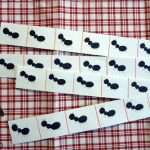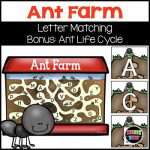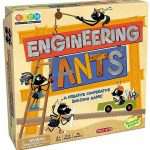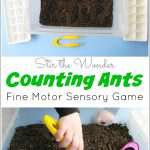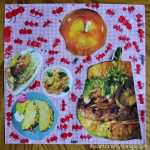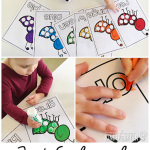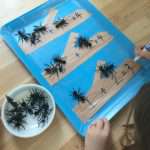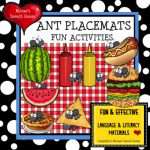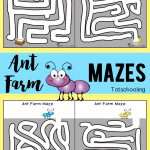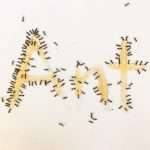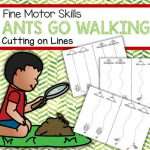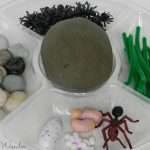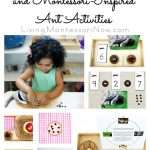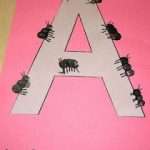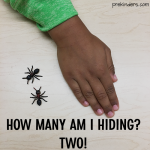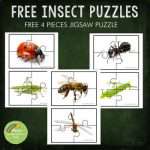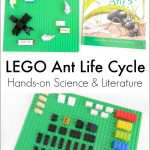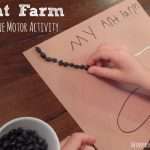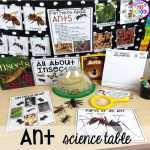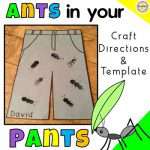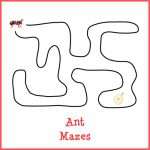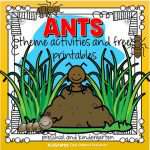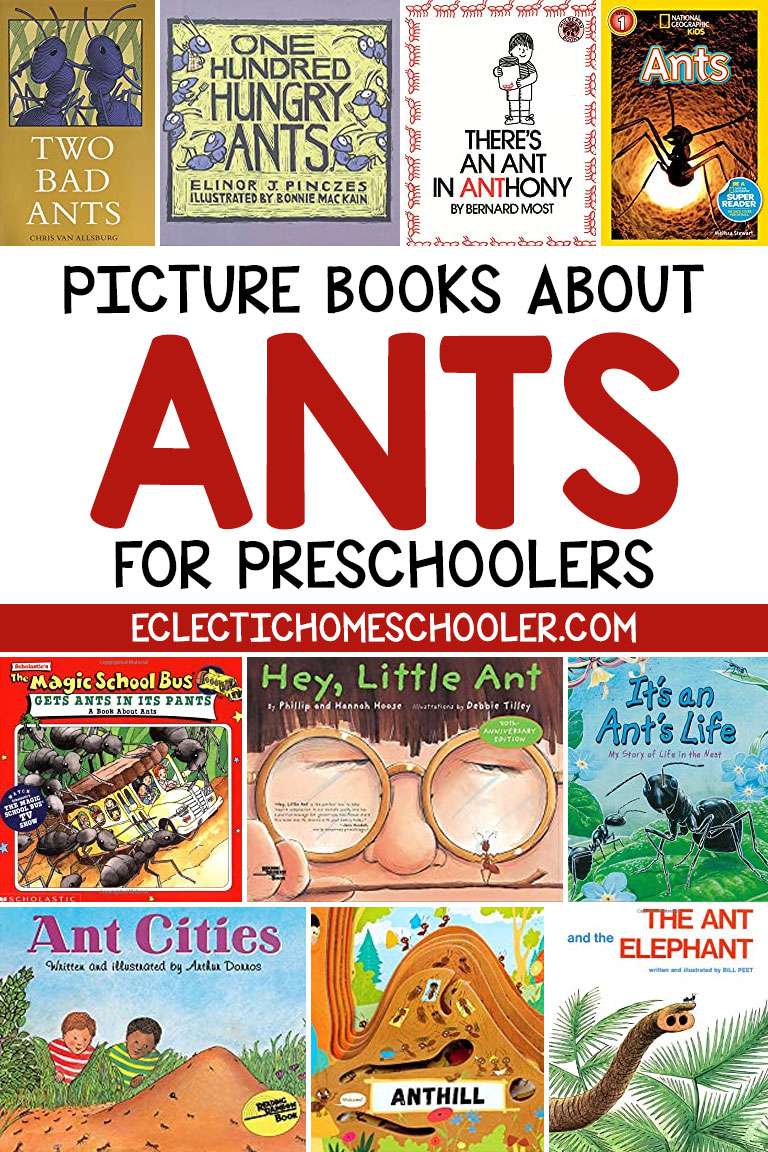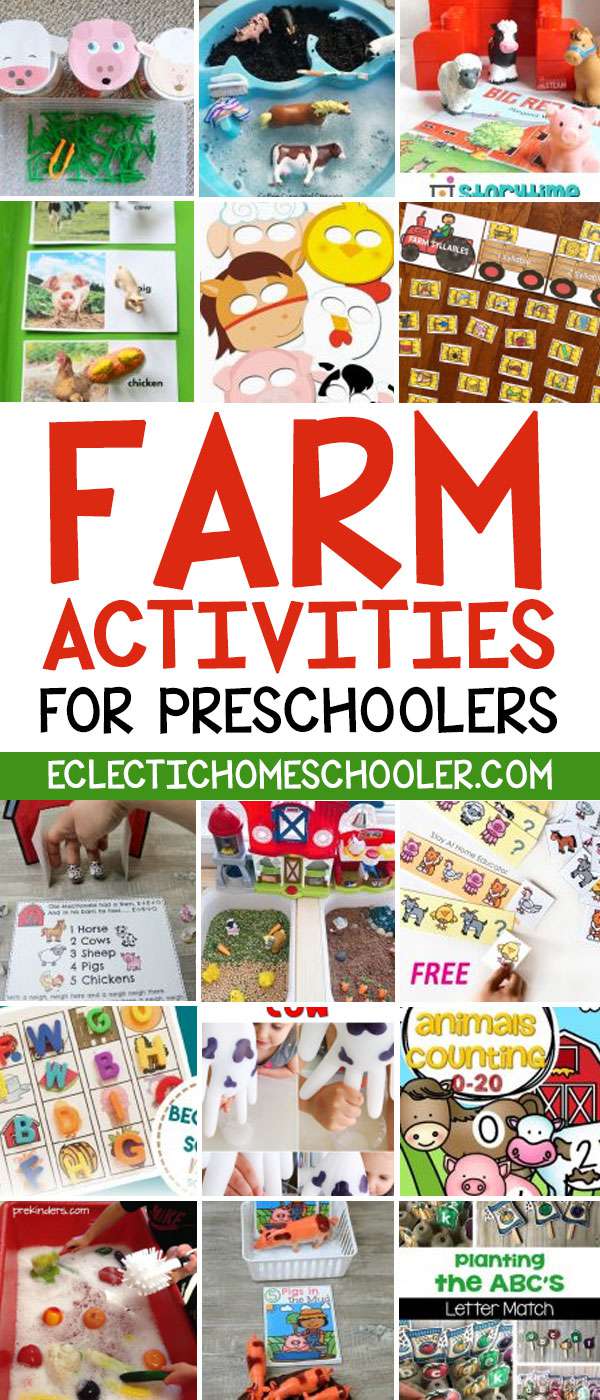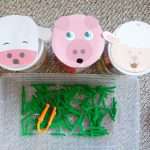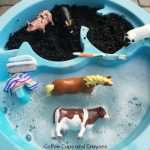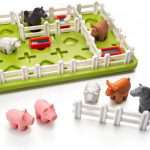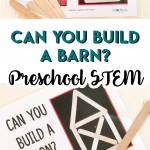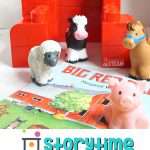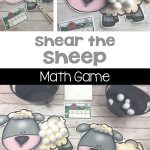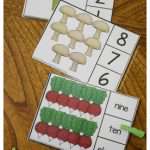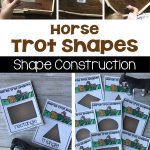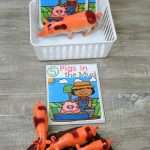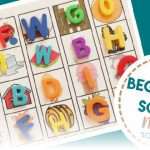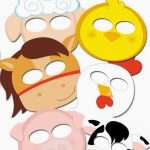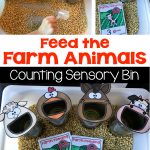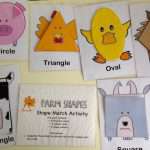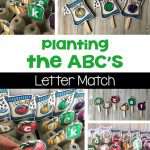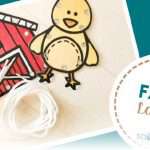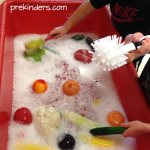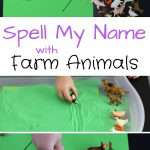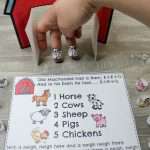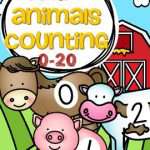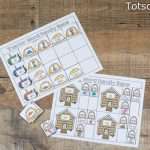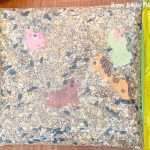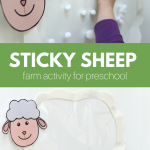Today I have a roundup of over 100 human body books for kids. This HUGE collection of picture books about the body for preschool, kindergarten, and young elementary children is perfect if you’re planning a homeschool unit on the human body.
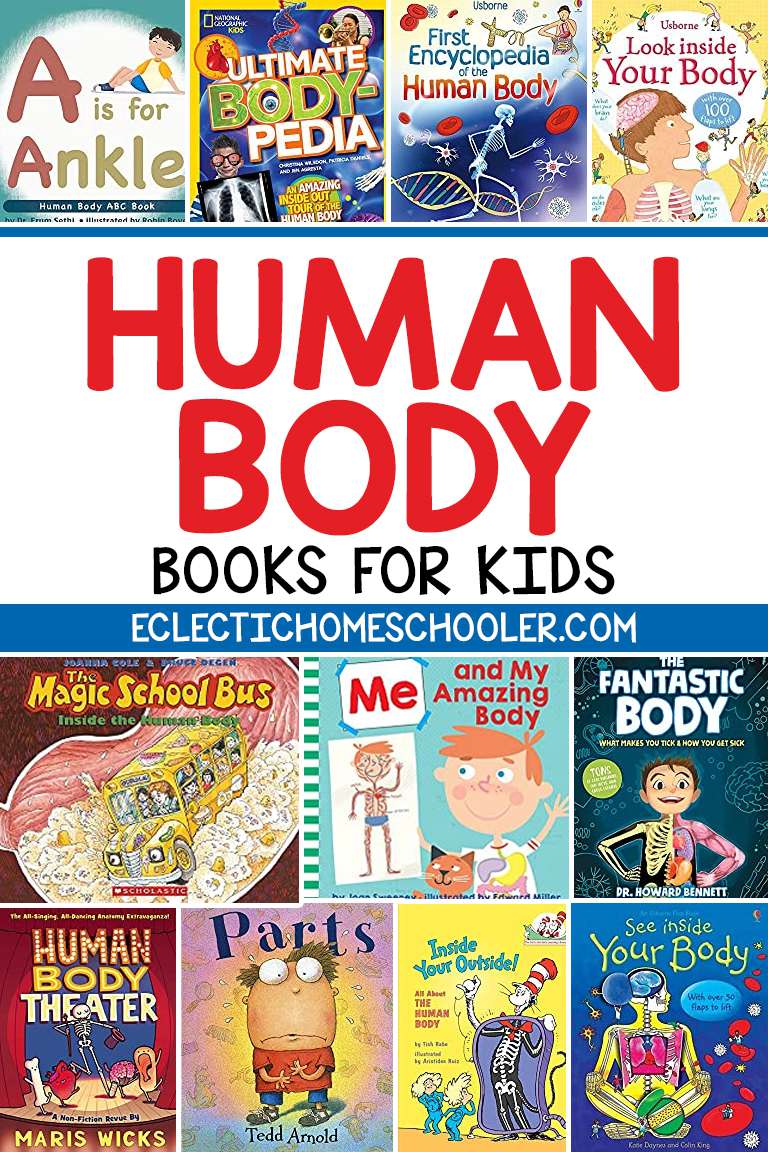
Books About the Body for Preschool Homeschool
Teaching young children about the human body is important so they can learn how their bodies work and how to take good care of them. And it doesn’t have to be boring either! There are a lot of great books about the body for preschool age children as well as other young kids.
As you select the books you want to read with your children about the human body, be sure to include a mixture of both fiction and non-fiction. When I plan my own units I try to include at least 1/3 books that are non-fiction. Even when children are young, they can be introduced to the benefits of reading non-fiction books too.
Since there are so many different aspects to learning about the human body, I thought it would be easiest for you to find what you’re looking for if I organized them by sub-topic. So you can either scroll through the list or simply click the link below that you’re looking for to jump to the type of human body books that you need.
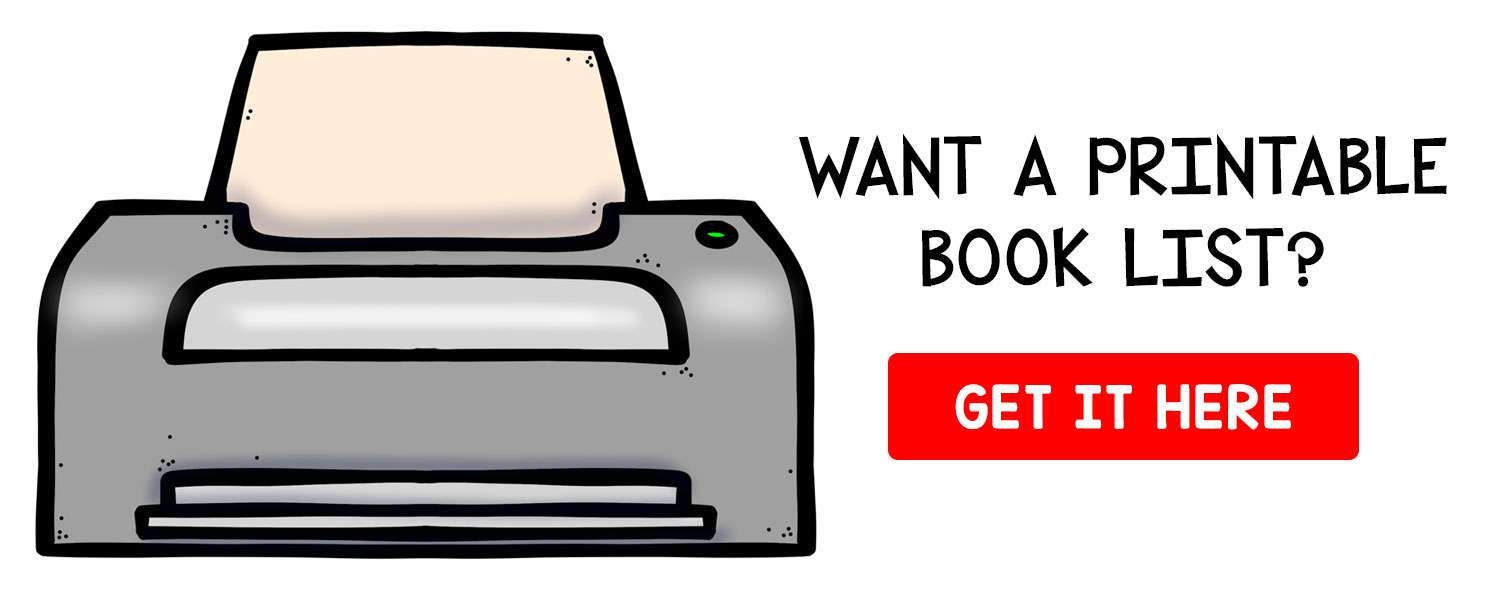
Generic Human Body Books for Kids
First I have a list of some generic human body books for children. These include an overview of the human body and how it works for preschoolers and young children.
A is for Ankle: Human Body ABC Book by Erum Sethi and Robin Boyer
The human body is amazing! Learn about 26 words about the body in this easy-to-follow, action-filled ABC book. Dr. Erum Sethi has written a clear yet dynamic book to introduce children to body parts and concepts. A perfect way to learn the alphabet and anatomy!Articulately written, Dr. Sethi makes anatomy easy and fun for children. It even touches upon simple scientific ideas, body functions and even medical terms. While some words are basic, like ankle and brain, she also includes more advanced words like zygote and uvula. And not all words are body parts, children will also learn what an X-ray is and what it means to be a young adult. A is for ankle. This connects your leg to your foot. Can you touch your ankles? B is for brain. This is what you use to think. Can you think of something funny?
Human Body Theater: A Non-Fiction Revue by Maris Wicks
Welcome to the Human Body Theater, where your master of ceremonies is going to lead you through a theatrical revue of each and every biological system of the human body! Starting out as a skeleton, the MC puts on a new layer of her costume (her body) with each “act.” By turns goofy and intensely informative, the Human Body Theater is always accessible and always entertaining. Maris Wicks is a biology nerd, and by the time you’ve read this book, you will be too! Harnessing her passion for science (and her background as a science educator for elementary and middle-school students), she has created a comics-format introduction to the human body that will make an expert of any reader — young or old!
The Fantastic Body: What Makes You Tick & How You Get Sick by Howard Bennett
A comprehensive guide to the human body meets hilarious kid humor in this gorgeous full color book filled with more than 1,000 diagrams and fun facts!Written by a pediatrician, this is the ultimate kids’ reference guide to the human body! Jam-packed with fun facts, cool diagrams, and gross stories galore, this go-to guide will captivate curious readers for hours on end. Kids can also take their learning beyond reading the book, with DIY projects that demonstrate different body functions and tips for making their regular checkups less scary. Through humor, science, and engaging illustrations, this fun and comprehensive anatomy book is the perfect gift for kids wanting to know more about the mysterious stuff going on inside their bodies.
Parts by Tedd Arnold
I just don’t know what’s going onOr why it has to beBut every day it’s something worseWhat’s happening to me?So begins this uproarious new story from the best-selling creator of No Jumping on the Bed!,Green Wilma, and other popular books. The young narrator has discovered a disturbing trend: There’s fuzz in his belly button his toes are peeling and something just fell out of his nose. The last straw is a loose tooth, which convinces him of the awful truth his parts are coming unglued!Parts deals with a subject of deepest interest to every young child: the stuff our bodies shed. Parents will appreciate the reassuring message that it’s all quite normal, while Tedd Arnold’s comical illustrations and rhyming text are guaranteed to make young readers laugh their heads off.
Inside Your Outside! All About the Human Body by Tish Rabe and Aristides Ruiz (The Cat in the Hat’s Learning Library)
Laugh and learn with fun facts about the brain, the heart, the muscles, and more—all told in Dr. Seuss’s beloved rhyming style and starring the Cat in the Hat! “I’m the Cat in the Hat here to share some good news. From the tips of your hair to the toes in your shoes.”The Cat in the Hat’s Learning Library series combines beloved characters, engaging rhymes, and Seussian illustrations to introduce children to non-fiction topics from the real world! Travel inside the human body with the Cat in the Hat and learn: how the brain controls everything you dohow the bones in your body are stronger than steelhow white blood cells eat the germs that can make us sickand much more!Perfect for story time and for the youngest readers, Inside Your Outside! All About the Human Body also includes an index, glossary, and suggestions for further learning.Look for more books in the Cat in the Hat’s Learning Library series!High? Low? Where Did It Go? All About Animal CamouflageIs a Camel a Mammal? All About MammalsThe 100 Hats of the Cat in the Hat: A Celebration of the 100th Day of SchoolA Great Day for Pup: All About Wild BabiesWould You Rather Be a Pollywog? All About Pond LifeHappy Pi Day to You! All About Measuring CirclesI Can Name 50 Trees Today! All About TreesFine Feathered Friends: All About BirdsMy, Oh My–A Butterfly! All About ButterfliesOh Say Can You Seed? All About Flowering PlantsIce is Nice! All About the North and South Poles
Ultimate Bodypedia: An Amazing Inside-Out Tour of the Human Body by Christina Wilsdon (National Geographic Kids)
This fun, smart guide to the human body answers kids’ questions and engages them with amazing facts, photos, illustrations, and diagrams. The kid-friendly journey travels through the body and all its systems and is sprinkled throughout with plenty of health tips, top 10 lists, simple experiments, and weird-but-true wacky details. Young readers will learn about age-appropriate medical history and body basics, from cells and DNA to growth and aging.

The Magic School Bus Inside the Human Body by Joanna Cole and Bruce Degen
To celebrate its 20th anniversary, Scholastic is re-releasing the ten original Magic School Bus titles in paperback. With updated scientific information, the bestselling science series ever is back!Arnold has swallowed the Magic School Bus! Now, instead of seeing an exhibit of the human body at a museum, the class is taking a look at Arnold’s stomach, his intestines, his bloodstream, and more from the inside on this heart-stopping fieldtrip – one the reluctant Arnold would be happy to miss.Don’t miss the all-new Magic School Bus: Rides Again book series and the animated show streaming on Netflix now!
See Inside Your Body by Katie Daynes and Colin King
Fabulous flap book that reveals the inner workings of the human body. Bright, original color illustrations and diagrams display all the major organs of the human body and are accompanied by witty, clear and informative text. Contains over fifty embedded flaps that children can lift to reveal extra detail. Written with expert advice from Dr. Zoe Fritz, a Consultant Physician and Director of Studies in Clinical Medicine at Cambridge University.
Look Inside Your Body by Louie Stowell and Kate Leake
From brains and blood to senses and skin – children will love exploring the ins-and-outs of the human body with this fantastic interactive book. Young readers’ minds will boggle as they learn about how their brains work, what happens when they eat, how their lungs use oxygen and much more. Full of surprises to keep inquiring minds entertained, including flaps beneath flaps and a peek inside a lavatory cubicle.
How Does My Body Work? by Charlotte Guillain (Our Bodies: Acorn Read-Aloud, Level M)
This book explores the function, appearance, and purpose of some important parts of the human body. How Does My Body Work? uses simple text and vivid photographs to explain one organ and its role in a healthy life. Simple graphic illustrations help readers conceptualize the role of each organ in their body, as well as help to illustrate the appearance and function of some organs that readers cannot see.
Me and My Amazing Body by Joan Sweeney and Ed Miller
What exactly can your body do? A beloved bestseller that helps children understand anatomy, from their eyes to their toes, is back! Now refreshed with new art from Ed Miller. What is under your skin? Why do you have bones? What do your muscles do? Where does the food that you eat go? Me and My Amazing Body can show you! From your head to your toes and everything in between, this playful introduction to anatomy explains all the important parts of your body. Easy to read and easy to understand, Me and My Amazing Body helps children appreciate everything their bodies can do.
First Encyclopedia of the Human Body by Fiona Chandler, Holly Bathie, and David Hancock (First Encyclopedias)
A fact-packed, beautifully illustrated, all-round introduction to the human body and how it works. Full of extraordinary photographs, detailed diagrams, stunning scans, x-rays and microscope images of the human body. Engaging text and clear, simple explanations of all the main bodily functions. Includes amazing facts, a glossary of body words, a comprehensive index and internet links to recommended websites at Usborne Quicklinks.

Simple Body Parts Books for Toddlers and Babies
If you have a baby or toddler in toe as you homeschool then why not include them in on the fun? Here are some great options for body parts books for toddlers and babies that just talk about basic body parts in a simple kind of way.

Hello, World! My Body by Jill McDonald
Learn from home and explore the world with these fun and easy board books!Young children are fascinated by their eyes, ears, nose, fingers, and toes. Here’s a Hello, World! board book that teaches toddlers all about the human body, with shapes, sizes, colors, and super-simple facts. Hello, World! is a series designed to introduce first nonfiction concepts to babies and toddlers. Told in clear and easy terms and featuring bright, cheerful illustrations, Hello, World! makes learning fun for young children. And each sturdy page offers helpful prompts for engaging with your child. (“How many fingers can you count on each hand?”) It’s a perfect way to bring science and nature into the busy world of a toddler, where learning never stops. Look for all the books in the Hello, World! series: • Solar System• Weather• Backyard Bugs• Birds• Dinosaurs• My Body• How Do Apples Grow?• Ocean Life• Moon Landing• Pets• Arctic Animals• Construction Site• Rainforest Animals• Planet Earth • Reptiles• Cars and Trucks • Music• Baby Animals• On the Farm• Garden Time• Planes and Other Flying Machines• Rocks and Minerals• Snow• Let’s Go Camping• School Day• Baking• From Seed to Pumpkin
Eyes, Nose, Fingers, and Toes: A First Book All About You by Judy Hindley and Brita Granström
Children will discover the wonders of their bodies and the joy of learning to move in this edition of the popular picture book.From a wiggle of their shoulders to a stomp of their feet, a group of lovable toddlers joyfully explores the many ways to use their bodies. Lips can be made small for kissing, while arms can go up and down or reach out to hug those we love. Judy Hindley’s jaunty text and Brita Granstrom’s playful illustrations are perfect for children as they begin to discover the wonders of their bodies and the joy of learning to move.
Where Is Baby’s Belly Button? A Lift-the-Flap Book by Karen Katz
Karen Katz’s adorable babies play peekaboo in this delightful interactive book. The sturdy format and easy-to-lift flaps are perfect for parents and children to share.”Where are Baby’s hands? Under the bubbles!” “Where are baby’s eyes? Under her hat!”
Disney Baby Winnie the Pooh – Head to Toe! 10-Button Sound Book – PI Kids by PI Kids (Play-A-Song)
Look, listen, and learn with Disney’s beloved Winnie the Pooh characters! Ten sound buttons name parts of the body, and play a sing-along version of “Head, Shoulders, Knees, and Toes.” Shake your shoulders, touch your toes, and wiggle your nose with Pooh and all his pals…while Tigger bounce, bounce, bounces on his tail! Boing!This sound book is special because:Hands on interaction engages young readersConnecting words with pictures builds vocabularyMultisensory reading experiences stimulate the imaginations of young readersIncludes great classic characters: Winnie the Pooh, Christopher Robin, Tigger, Eeyore, Piglet, Roo, Kanga, Rabbit, and Owl!
Smile! by Roberta Grobel Intrater (Baby Faces Board Book)
Share the warmth of a smile with these adorable babies!The perfect snuggletime book and an ideal first read-aloud book, this addition to the popular Baby Faces series has appealing photos of multicultural babies and toddlers and a brief, rhyming text.Collect the entire series: PEEK-A-BOO!EAT!SLEEPSPLASH!HUGS & KISSES

My First Body by DK (My First Board Books)
Children can learn about their body in My First Body, an informational board book featuring images illustrating parts of the body. The bold, visual images are labeled clearly and promote early learning and language skills. The books are a sturdy format that is ideal for small hands to hold and carry, and the pages are filled with a distinctive, iconic design. The books can be read either alone or with an adult, and encourage learning on your own. Explore the amazing human body in My First Body.This revamp of DK’s most successful board books series includes updated photography, contemporary design, and an insightful approach to engaging preschoolers. With charming, bold design, clear labels, and a wide variety of topics, these first learning books encourage children to build the vocabulary and language skills that form the foundation of early education. DK’s iconic My First board book series not only provides a collection of educational information books that children can refer back to again and again, but also offers a first taste of independent learning.
Eyes, Nose, Toes Peekaboo!: Touch-and-Feel and Lift-the-Flap by DK
The perfect book for infants who love playing peekaboo. Little ones will learn how to point to their eyes, nose, and toes for endless fun! Your child will be filled with delight as they pull back the flaps to reveal exciting surprises. •Durable flaps are perfect for little hands to flip. •Simple text encourages interaction between parent and child. •Develops imagination, thinking and memory skills. •Perfect for infants 0-18 months.
Head, Shoulders, Knees & Toes by Annie Kubler (Board Book)
This award winning series, specifically designed for babies, is now available in a smaller format, perfect for little hands. A great introduction to books through well-known nursery rhymes and interactive text. Singing songs and rhymes is the perfect way to bond with your baby and share quality time. It also aids language development by introducing them to the natural sounds and patterns of speech. Combining these with actions also stimulates the brain and helps muscle development.
Baby Faces by DK
Perfect for early childhood development, happy babies, laughing babies, silly babies and crying babies are found on the pages of this padded board book.Look at all the sweet baby faces showing that they are happy, sad, sleepy, and more. Your baby can make the same expressions to help recognize common expressions. This durable little book is sure to pique baby’s interest.With bright colorful photos and simple word labels that capture the expressions and moods of babies throughout their busy days, Baby Faces will mesmerize little ones when they see other children just like them.
Toes, Ears, & Nose! A Lift-the-Flap Book by Marion Dane Bauer and Karen Katz
Play peekaboo with Baby in this bestselling lift-the-flap concept book from Marion Dane Bauer and Karen Katz!Inside my mittens I’ve got… fingers! Baby is bundled in a mountain of clothes! As little ones lift the large, sturdy flaps to find out what’s underneath each piece of clothing, they’ll love playing and learning with this fun peekaboo book again and again!

Healthy Living Books for Kids
When you talk about the human body, it’s a great time to talk about healthy living too. So here are some great healthy living books for kids that can help them to learn how to keep their bodies healthy and strong through exercise, healthy food, and healthy habits.

Why We Exercise by Rosalyn Clark (Bumba Books ® — Health Matters)
Playing games and going outside is fun, but did you know it’s also good for you? Learn more about how exercise helps your body and mind grow! Lively, carefully leveled text, age-appropriate critical thinking questions, and colorful photos help young readers learn about healthy habits.
The Busy Body Book: A Kid’s Guide to Fitness by Lizzy Rockwell
A celebration of the amazing human machine and a life on the move!Your amazing body can jump, sprint, twist, and twirl. Your body is built to move.Lizzy Rockwell explains how your bones and muscles, heart and lungs, nerves and brain all work together to keep you on the go. Kids walk and skate and tumble through these pages with such exuberance that even sprouting couch potatoes will want to get up and bounce around—and that’s the ultimate goal. Studies show that American kids are becoming more sedentary and more overweight and that they carry these tendencies with them into adolescence and adulthood. Experts agree that we need to help kids make physical activity a life-long habit. Through education, information, and encouragement, this book aims to inspire a new generation of busy bodies!
Why We Eat Healthy Foods by Rosalyn Clark (Bumba Books ® ― Health Matters)
Do you know what foods are good for you? It’s not just vegetables! Find out more about eating healthy and why it’s important. Lively, carefully leveled text, age-appropriate critical thinking questions, and colorful photos help young readers learn about healthy habits.
My Amazing Body: A First Look at Health and Fitness by Pat Thomas and Lesley Harker (A First Look at…Series)
Are there children in your life who are thinking about their health and physical fitness? This book will help explain everything! It will explore the importance of a good diet and plenty of exercise and encourage kids to make positive decisions about caring for themselves. Kids discover that even healthy people get ill sometimes, but that our bodies show real grit and have special abilities to protect us and restore our health.Parents, teachers, and gift givers will find:language that is simple, direct, and easier for younger children to understandinformation about health and physical fitnessa helpful book written by a psychotherapist and counselora whole series of books for children to explore emotional issuesThe A First Look At series promotes positive interaction among children, parents, and teachers, and encourage kids to ask questions and confront social and emotional questions that sometimes present problems. Books feature appealing full-color illustrations on every page plus a page of advice to parents and teachers.
Oh, The Things You Can Do That Are Good for You! All About Staying Healthy by Tish Rabe and Aristides Ruiz (The Cat in the Hat’s Learning Library)
Laugh and learn with fun facts about eating healthy, being active, avoiding germs, and more—all told in Dr. Seuss’s beloved rhyming style and starring the Cat in the Hat! Now featuring 16 bonus pages of kid-friendly recipes and fun ways to get moving, created with Partnership for a Healthier America.“I’m the Cat in the Hat and I’ve come here to say: to be healthy, be active—an hour each day.”The Cat in the Hat’s Learning Library series combines beloved characters, engaging rhymes, and Seussian illustrations to introduce children to non-fiction topics from the real world! Take care of yourself and learn why it’s important to:• move your body every day• eat colorful foods• wash your hands• and much more!Perfect for story time and for the youngest readers, Oh, the Things You Can Do That Are Good for You! also includes an index, glossary, and suggestions for further learning.Look for more books in the Cat in the Hat’s Learning Library series!Wacky WeatherOne Cent, Two Cents, Old Cent, New CentSuper-Dee-Dooper Book of Animal FactsOh, the Pets You Can Get!

Why We Keep Clean by Rosalyn Clark (Bumba Books ® ― Health Matters)
How important is washing your hands and other body parts? Find out how keeping clean helps us stay healthy! Lively, carefully leveled text, age-appropriate critical thinking questions, and colorful photos help young readers learn about healthy habits.
The Berenstain Bears & Too Much Junk Food by Stan Berenstain and Jan Berenstain
This classic Berenstain Bears story is a perfect way to teach children about the importance of eating healthy and staying active!Come for a visit in Bear Country with this classic First Time Book® from Stan and Jan Berenstain. Papa, Brother, and Sister are eating way too much junk food, and it’s up to Mama and Dr. Grizzly to help them understand the importance of nutritious foods and exercise. Includes over 50 bonus stickers!
Eat Healthy, Feel Great by William Sears Martha Sears Christie Watts Kelly(2002-09-01) by William Sears (2002-09-01)
The authors of the acclaimed Sears Parenting Library introduce two new books for young children to read with caregivers. Eat Healthy, Feel Great gives kids the tools to make their own wise food choices. Quick and easy recipes that kids can make with adult supervision are also included. You Can Go to the Potty clearly introduces the basic steps of toilet learning in a natural, non-pressured way. The text encourages a child’s motivation in using the toilet, while offering tips to parents on developmental readiness. With concise and reassuring text and lively illustrations, these two books by the foremost authorities on attachment parenting are must haves. Both books include detachable posters as learning aids.Author William Sears is associate clinical professor of pediatrics at the University of California School of Medicine, Irvine. Martha Sears is a registered nurse and a parenting and breastfeeding consultant. Christie Watts Kelly has a degree in elementary education from the University of Memphis. Renee Andriani is a graduate of the Rhode Island School of Design.
Move Your Body!: My Exercise Tips by Gina Bellisario and Renée Kurilla (Cloverleaf Books ™ ― My Healthy Habits)
It’s almost Field Day! But Natalie’s team isn’t ready for the big race. Their muscles get tired easily. Ms. Starr teaches them about aerobic and anaerobic exercise. They learn some stretching exercises too. Now they’re full of energy. Can they win the beach ball relay?
Good Enough to Eat: A Kid’s Guide to Food and Nutrition by Lizzy Rockwell
Good Enough to Eat is one of a kind: the only guide to kids’ nutrition written especially for kids. A practical, hands-on tool for families who want to eat a healthy diet, this book explains nutrition from carrots to cookies.In this book, you will learn:all about the nutrient groups—carbohydrates, protein, fat, water, vitamins, and mineralseach nutrient’s functionwhich foods contain which nutrientshow much of each nutrient a kid needs each dayhow the body digests foodall about caloriesGood Enough to Eat includes kid-friendly recipes such as Alphabread and Full o’ Beans Soup, and even shows kids how to test their food for fat. Perfect for parents, educators, librarians, and doctors trying to explain healthy eating to kids!
I Can’t Eat This Stuff: How to Get Your Toddler to Eat Their Vegetables by Liz Fletcher and Greg Bishop (Brave Kids Press)
Is your child a picky eater? Have no fear; Louie is here to help!I Can’t Eat This Stuff is the perfect book for your child as it shows the importance of healthy eating through imagination, fun, and adventure! Your kiddo will start eating their broccoli because it’s “superhero fuel!” Just be prepared for lots of flexing at the dinner table.Louie will make a veggie lover out of even the pickiest of kids. At first, Louie isn’t so sure about the importance of eating his veggies, however, after a visit from some special friends, Louie decides..ok, maybe just one bite. Then, before you know it, Louie starts feeling extra super! This adorable rhythmic book will turn your fussy eaters into veggie-loving superheroes! Because haven’t you heard?…Vegetables are superhero fuel!A Note from the Publisher:Brave Kids Press book series promotes curiosity, confidence, and desire within your child. He or she will giggle through each sweet, rhythmic story and be inspired to create a growth mindset and conquer any milestone with just a little bit of courage. Reviews:This book is INCREDIBLE and worked absolutely perfect for my 3 and 5-year-olds. A lot of books show a kid giving excuses for why they don’t want to eat their veggies, which a child can copy (and most likely will!) IThesweet elephant shows the reader all the amazing things veggies do for your body. In this book, My kids are honestly trying new veggies because of this book. My son is inhaling broccoli because it “..keeps his heart and muscles strong” just like Louie. I can’t wait to buy her new book on potty training. Silly Louie (as we lovingly call him) is a favorite in our house that they want to read daily.- Sarah Gardner This book rules. My 5 and 7-year-old love it. I Can’t Eat This Stuff teaches the importance of courage and trying something new through the adventures of Louie, the most adorable elephant. Louie has worked wonders for my kids as they are asking to try new veggies (and other healthy foods) because “its superhero fuel.” I highly, HIGHLY recommend it!- Alan, New York

Circulatory System (Blood, Heart, Veins)
Here are some human body books about the Circulatory System which includes the blood, heart, and veins.
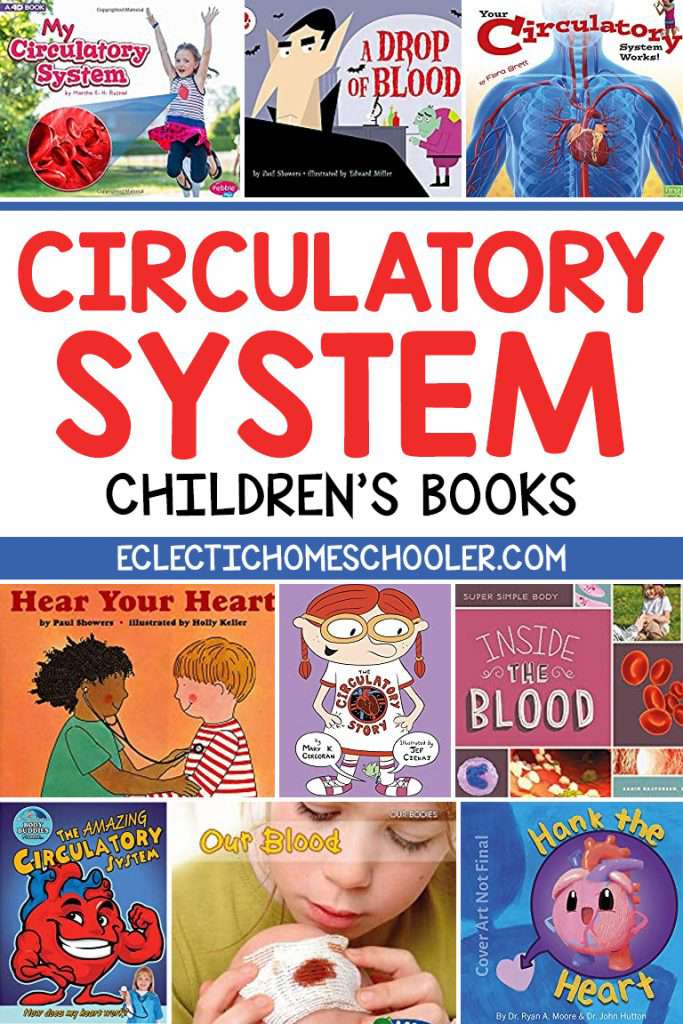
My Circulatory System: A 4D Book by Martha E H Rustad (My Body Systems)
Your circulatory system pumps blood from your heart to the rest of your body. Follow the flow, and learn how blood works hard to keep your body healthy. Bring augmented reality to your students by downloading the free Capstone 4D app and scanning for access to awesome videos!
The Circulatory Story by Mary K. Corcoran and Jef Czekaj
Humorous text paired with comic illustrations, brings anatomy and science of the body to life for young readers in this exploration of the circulatory system. From the author and illustrator of THE QUEST TO DIGEST comes another playful way to learn about the body and its inner workings. Readers follow a red blood cell on its journey through the heart, lungs, veins, arteries, capillaries, and more, as they see how the body combats disease, performs gas exchanges, and fights plaque. This whimsical glimpse into the human body is fun and informative, perfect for the classroom or the home, and is sure to please the most curious of readers.
Your Circulatory System Works! by Flora Brett (Your Body Systems)
The circulatory system is the heart of the body. With engaging text, fun facts, and infographics, learn how the circulatory system is responsible for pumping blood and nutrients throughout the body.
The Amazing Circulatory System: How Does My Heart Work? by John Burstein (Slim Goodbody’s Body Buddies, 4)
Describes the circulatory system, including how the heart functions, why blood is an important part of the body, and what could cause problems within blood vessels.

Blood
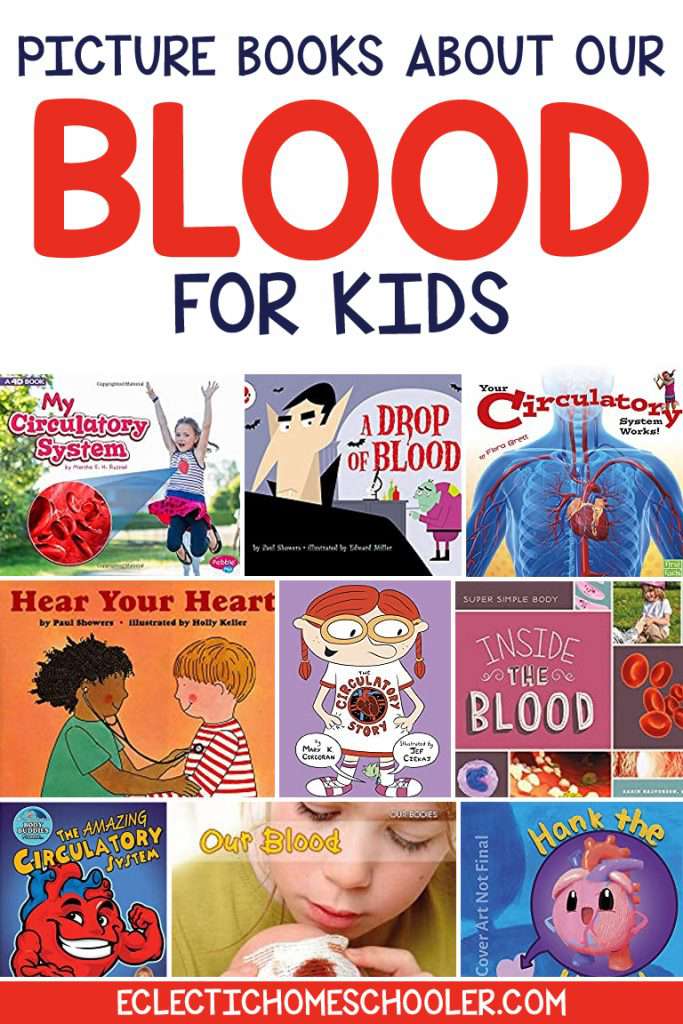
Our Blood by Charlotte Guillain (Acorn: Our Bodies)
This series focuses on different parts of the body, explaining where they are found and how they function.
A Drop of Blood by Paul Showers and Edward Miller (Let’s-Read-and-Find-Out Science 2)
Read and find out about how your body uses blood in this colorfully illustrated nonfiction picture book.You’ve seen your own blood, when you have a cut or a scrape. You can see the veins in your wrist, and you’ve seen the scab that forms as a cut heals. But do you know what blood does for you?”An excellent choice for units on the circulatory system or to take the fear out of cuts, scrapes, and blood tests,” according to a School Library Journal starred review.Without blood, you couldn’t play, or grow, or learn. That’s because just about every part of your body needs blood, from your muscles to your bones to your brain. How does your body use blood? Read and find out! This is a clear and appealing science book for early elementary age kids, both at home and in the classroom. It’s a Level 2 Let’s-Read-and-Find-Out, which means the book explores more challenging concepts for children in the primary grades. The 100+ titles in this leading nonfiction series are:hands-on and visualacclaimed and trustedgreat for classroomsTop 10 reasons to love LRFOs:Entertain and educate at the same timeHave appealing, child-centered topicsDevelopmentally appropriate for emerging readersFocused; answering questions instead of using survey approachEmploy engaging picture book quality illustrationsUse simple charts and graphics to improve visual literacy skillsFeature hands-on activities to engage young scientistsMeet national science education standardsWritten/illustrated by award-winning authors/illustrators & vetted by an expert in the fieldOver 130 titles in print, meeting a wide range of kids’ scientific interestsBooks in this series support the Common Core Learning Standards, Next Generation Science Standards, and the Science, Technology, Engineering, and Math (STEM) standards. Let’s-Read-and-Find-Out is the winner of the American Association for the Advancement of Science/Subaru Science Books & Films Prize for Outstanding Science Series.
Inside the Blood by M.D. Halvorson, Karin (Super Simple Body)
Find out what goes on every day Inside the Blood! Detailed illustrations, color photos, and simple text combine to make a fun and easy introduction to how blood works. This book also includes simple activities and crafts like Plasma Soup, Blood Pumpers and Blood-Type Hype with how-to photos to further engage young learners. Aligned to Common Core Standards and correlated to state standards. Super Sandcastle is an imprint of Abdo Publishing, a division of ABDO.

Heart
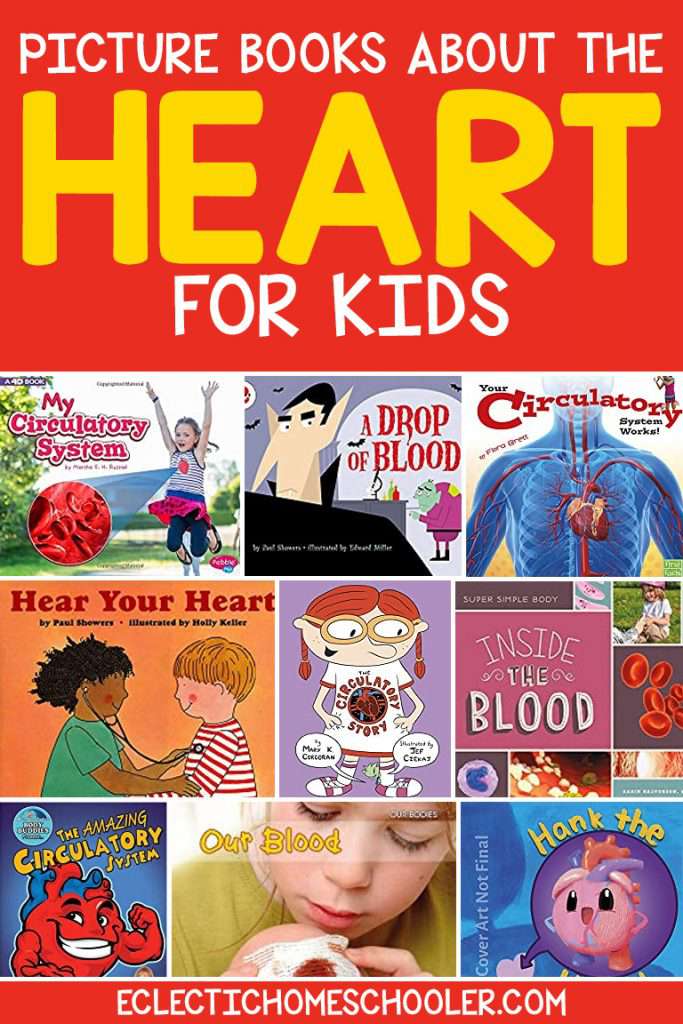
Hear Your Heart by Paul Showers and Holly Keller (Let’s-Read-and-Find-Out Science 2)
Read and find out about how your heart works in this colorfully illustrated nonfiction picture book.Night and day, whether you’re asleep or awake, your heart is always beating. This overview of how the heart works is a good overview for youg readers.Hear Your Heart also includes a find out more section on how to measure your heart rate, how to exercise your heart, and how to make a stethoscope.This clear and appealing science book for early elementary age kids, both at home and in the classroom, is a Level 2 Let’s-Read-and-Find-Out, which means the book explores more challenging concepts for children in the primary grades. The 100+ titles in this leading nonfiction series are:hands-on and visualacclaimed and trustedgreat for classroomsTop 10 reasons to love LRFOs:Entertain and educate at the same timeHave appealing, child-centered topicsDevelopmentally appropriate for emerging readersFocused; answering questions instead of using survey approachEmploy engaging picture book quality illustrationsUse simple charts and graphics to improve visual literacy skillsFeature hands-on activities to engage young scientistsMeet national science education standardsWritten/illustrated by award-winning authors/illustrators & vetted by an expert in the fieldOver 130 titles in print, meeting a wide range of kids’ scientific interestsBooks in this series support the Common Core Learning Standards, Next Generation Science Standards, and the Science, Technology, Engineering, and Math (STEM) standards. Let’s-Read-and-Find-Out is the winner of the American Association for the Advancement of Science/Subaru Science Books & Films Prize for Outstanding Science Series.
Hank the Heart by Dr. John Hutton, Dr. Ryan Moore, Cat Musgrove BFA, Matt Nelson BFA, and Jeff Cimprich
Say “Hello” to Hank the Heart! Loyal. Strong. Kind of blobby. Learn all about your heart from our lovable friend, Hank: what it’s made of, how it works and stays healthy, and ways it can be different. A perfect book to share and explore for young readers, budding scientists, and kinder-cardiologists. Most importantly, Hank will teach you why each heart is special and a part of what makes you so lovable!
Our Hearts by Charlotte Guillain (Acorn: Our Bodies)
Acorn books provide carefully levelled non-fiction to introduce key curriculum concepts. This series introduces parts of the human body and why we need them. Includes notes for parents and teachers.

Digestive System (Intestines, Rectum, Stomach)
Next we have some digestive system books for kids to learn about this system in our body including the intestines, rectum, and the stomach.
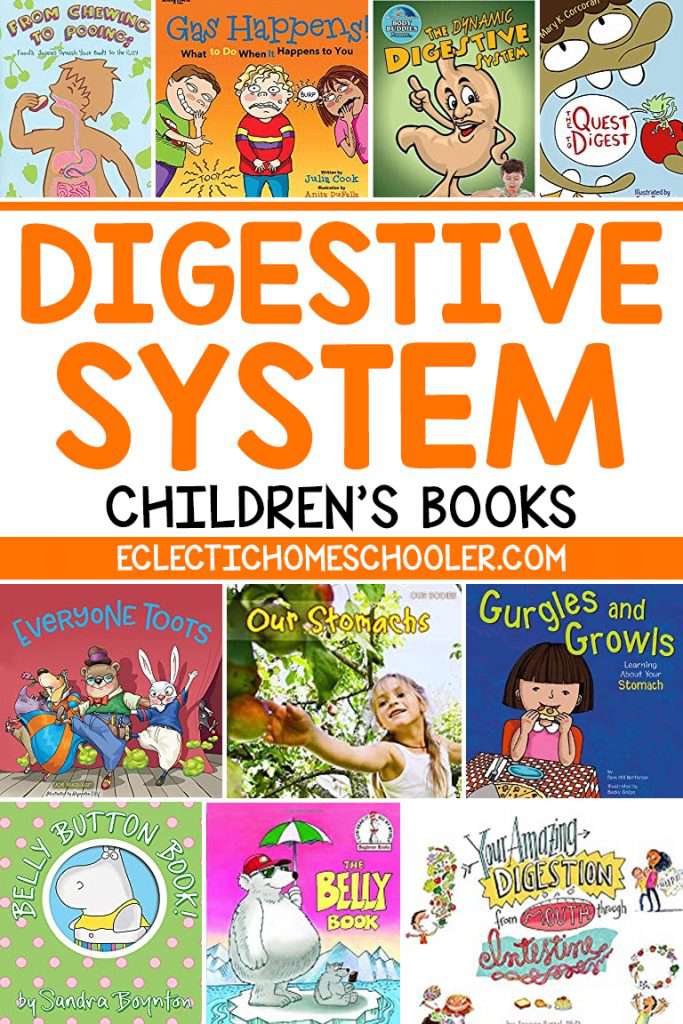
From Chewing to Pooing by Lauren Gehringer
Expands upon potty book favorites Everyone Poops and Where’s the Poop to accurately explain how our bodies digest food; reassuring anxious little ones and helping all kids understand this important way their body functions.The information is presented in simple rhymes with lively illustrations to keep young readers engaged. A back section for parents features doctor approved Tips For Healthy Digestion by pediatrician Natalie Gehringer to help keep digestion running smoothly.A fun and light-hearted introduction to the digestive process. This early education STEM book is ideal for preschool and kindergarten classes on up. Helpful to use while potty training and useful for kids (and their caretakers) struggling with childhood constipation.
The Quest to Digest by Mary Corcoran
A playful picture book that introduces STEAM readers to the science of the human digestive system. Humorous text and colorful illustrations follow an apple’s journey at each stage of digestion through the human body. Discover why mucus is so important to your body and how food particles are absorbed by the small intestine and turned into energy. Readers will also learn why we burp, vomit, and pass gas. Backmatter includes a full glossary of definitions and pronunciation of the various terms used that will help broaden vocabulary and general understanding. Curious readers will delight in identifying terms and learning basic concepts in this fun and funny introduction to nutritional science.
Your Amazing Digestion from Mouth through Intestine by Joanne Settel
With fascinating details, catchy rhymes, and quirky illustrations by Steve Björkman, acclaimed author Joanne Settel answers all of these questions (and more!) in this engrossing, fun exploration of the science of our digestive systems. When she’s through, you won’t believe what your guts can do—or what you can stomach!
The Dynamic Digestive System by John Burstein
Here, readers will learn about their esophagus, stomach, liver, and small and large intestine. They will also discover how important their teeth are in the process of digestion.
Rectum
Gas Happens! What to Do When It Happens to You by Julia Cook
As parents and educators, we’ve all been there. Gas is passed and a variety of snickers, giggles and negative comments ensue. But did you know that everyone and every living thing passes gas (except jelly fish and coral sponges)? If it’s so natural, why do we struggle with teaching children how to respond appropriately when it happens? Join Gus as he and his classmates learn the brief biology lesson behind why we all pass gas, and the right way and the wrong way to handle it when it happens in public.
Everyone Toots by Joe Rhatigan
There’s a time and a place for everything, but Everyone Toots, so remember that when it’s time to pass a little gas. Everyone Toots will have young children and their parents laughing and learning. Just like the title says, everyone toots. For the child who just doesn’t believe us, here’s the book that proves it. Does Dad toot? Yes. Does Mom toot? Of course! How about the president? Indeed. At once silly, mischievous, and wacky while also being informative and perhaps even a tad comforting. Everyone Toots, keeps it as tasteful as possible while also tickling everyone’s funny bone. The rhyming text and incredibly funny illustrations from well known Argentinean artist, Alejandro O’Kif, will keep kids coming back for another round of unicorns, elephants, big brothers, ballerinas, princesses, astronauts and more passing a little gas.
Stomach
The Belly Book by Joe Harris
Bellies come in all shapes and sizes. There are big ones, small ones, hot ones, cold ones, and even green ones! Learn about all kinds of bellies and the best way to take care of your very own belly–no matter what kind you have!
Our Stomachs by Charlotte Guillain (Our Bodies)
Books in this series introduce readers to the function, appearance, and purpose of some important organs. Each book uses simple text and vivid photographs to explain one organ and its role in a healthy life. In “Our Stomachs,” children learn what the stomach is, what it does to food, and how to keep it healthy.
Belly Button Book by Sandra Boynton
Featuring a beachful of bare-bellied hippos—including one tiny baby who can only say “Bee Bo”—the Belly Button Book is a quirky addition to the phenomenally successful Boynton on Board series. Every page captivates with Sandra Boynton’s inimitable illustrations and joyful rhyming text: Soon after dark, upon the beach, we sing a hippo song, and if you’re feeling in the mood, we hope you’ll sing along: “Belly Belly Button, you’re oh so fine. Ooo, Belly Button, I’m so happy you’re mine.”
Gurgles and Growls: Learning About Your Stomach by Pamela Hill Nettleton
An introduction to the stomach and other parts of the digestive system and how they function.
Immune System
Human body books that will help teach children about the Immune System within our bodies. This includes books about germs, getting sick, and how our bodies are designed to fight off sickness.
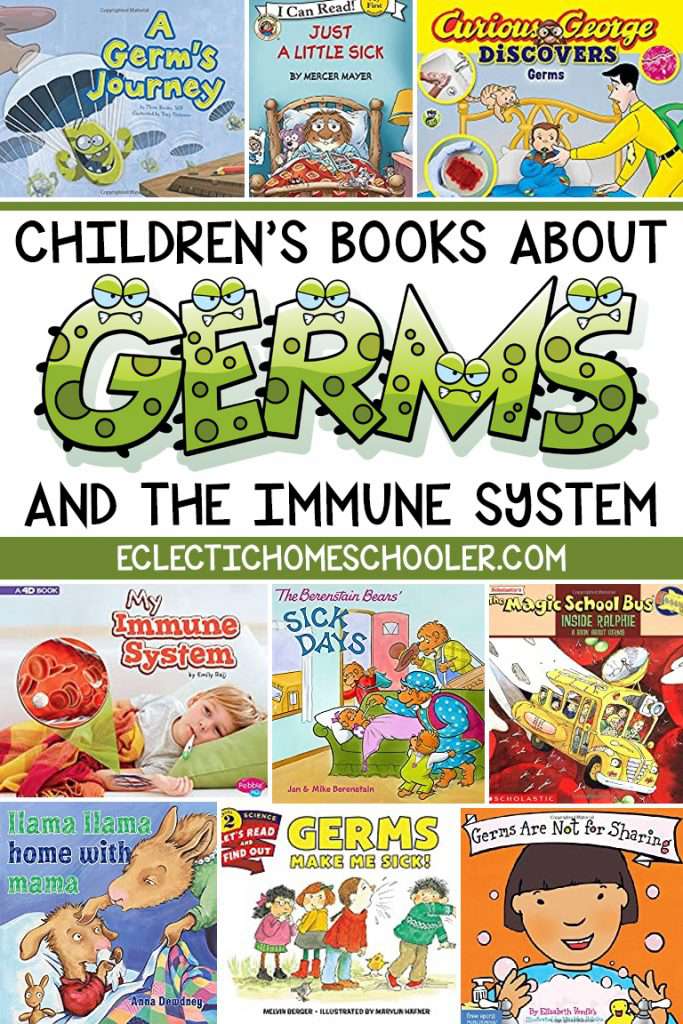
My Immune System by Emily Raij (My Body Systems)
Your immune system attacks germs to help keep you healthy. Learn how this system defends you from germs every day.
Curious George Discovers Germs by H. A. Rey
In this exciting new Curious George series all about discovery, George comes down with a cold and can’t wait to feel better. In the meantime, it’s straight to bed for this monkey. But when George drifts to sleep, his dreams take him on a wild ride inside the body to learn all about germs, how they affect us, and how to avoid and get rid of them. Based on the Emmy-winning PBS show, this story is filled to the brim with additional facts, real photos, experiments, activities, and more. Learning about science has never been so much fun!
Germs Make Me Sick! by Melvin Berger (Let’s-Read-and-Find-Out Science 2)
Germs are all around us, but they’re too small to see. Many germs are harmless, but two kinds, viruses and bacteria, can make you sick. How? Read and find out! This Level 2 Let’s-Read-and-Find-Out picture book is all about germs, how they can make you sick, and how your body works to fight them off.
A Sick Day for Amos McGee by Philip C. Stead
Friends come in all sorts of shapes and sizes. In Amos McGee’s case, all sorts of species, too! Every day he spends a little bit of time with each of his friends at the zoo, running races with the tortoise, keeping the shy penguin company, and even reading bedtime stories to the owl. But when Amos is too sick to make it to the zoo, his animal friends decide it’s time they returned the favor.
Llama Llama Home with Mama by Anna Dewdney
Ah-choo! Uh-oh, Llama Llama’s nose is feeling tickly, his throat is feeling scratchy, and his head is feeling stuffy. Back to bed, no school today for Llama Llama! Instead, he’s home with Mama. By lunchtime, though, he’s beginning to feel a tiny bit better. But now someone else has the sneezes . . . Mama! And who will help her feel better? Why, Llama Llama, of course!
Germs Are Not for Sharing by Elizabeth Verdick
Achoo! Cough! F-L-U-S-H! What to do? In childcare, in preschool, at home, and everywhere, toddlers need to learn that germs are not for sharing. Rather than focus on what germs are, this book teaches the basics of not spreading them: Cover up a sneeze or cough. Hug or blow kisses when you’re sick. And most of all, wash your hands! Child-friendly words and full-color illustrations help little ones stay clean and healthy. Includes tips and ideas for parents and caregivers.
The Berenstain Bears’ Sick Days by Jan & Mike Berenstain
Sister is home sick from school. Mama wants to take good care of her so she can get well quickly. It turns out that keeping Sister happy all day long is no small job! Soon both Sister and Mama are more than ready for a return to school.
A Germ’s Journey by Thom Rooke M.D.
Where did your cold germ come from? And ACHOO! Where is it going next? A germ’s journey is filled with snuffles, sniffles, and sneezes. Pack your bags, and get ready to follow it! This is a perfect book for explaining the immune system to children at home or at school.
Just a Little Sick by Mercer Mayer
When Little Critter feels just a little sick, Mom lets him stay home from school. Hooray! But between visiting the doctor and staying inside all day, missing school is not what Little Critter expected.
Immune System by Grace Hansen (Beginning Science: Body Systems)
This titles teaches readers about the immune system. Readers will learn about the importance of the immune system and the main defenses their body has against pathogens, like B cell, antibodies, and T cells. Aligned to Common Core Standards and correlated to state standards. Abdo Kids Jumbo is an imprint of Abdo Kids, a division of ABDO.
The Magic School Bus: Inside Ralphie – A Book About Germs by Joanna Cole and Beth Nadler
It’s Broadcast Day in Ms. Frizzle’s class. Ralphie promised everyone he’d figure out what kind of show they should put on. But, Ralphie is sick and can’t come to school. So, everyone climbs aboard the Magic School Bus, because if Ralphie can’t come to class, Ms. Frizzle’s class will come to him! Join the class as they travel Ralphie’s bloodstream to find out how germs make him sick and how his body can make him well again.
Muscular System
Human body books for kids about the body’s muscular system.

Our Muscles by Charlotte Guillain (Our Bodies)
Books in this series introduce readers to the function, appearance, and purpose of some important organs. Each book uses simple text and vivid photographs to explain one organ and its role in a healthy life. In “Our Muscles,” children learn what muscles are, how they help us move, and how to keep them healthy.
Bend and Stretch: Learning About Your Bones and Muscles by Pamela Hill Nettleton
An introduction to the different muscles and bones in the human body and how they function.
Strong Man: The Story of Charles Atlas by Meghan McCarthy
He could tear phone books in half, bend iron bars into giant Us, and pull a 145,000-pound train with his bare hands. But Charles Atlas wasn’t always one of America’s most famous strong men. Once upon a time, he was a “97-pound weakling” who was picked on by neighborhood bullies.Using her trademark humor, Meghan McCarthy brings to life the story of Charles Atlas, the man who would become “the World’s Most Perfectly Developed Man” and, with his fitness campaign, inspired the entire nation to get in shape, eat right, and take charge of our lives.
The Mighty Muscular and Skeletal Systems by John Burstein
Explores the muscular and skeletal systems of the human body.
Inside the Muscles by Karin M D Halvorson (Super Simple Body)
Find out what goes on every day Inside the Muscles! Detailed illustrations, color photos, and simple text combine to make a fun and easy introduction to how muscles work. This book also includes simple activities and crafts like Terrific Tendon, Muscle Motion and a muscle memory cup game with how-to photos to further engage young learners.
My Muscles by Jody Jensen Shaffer (Inside My Body)
A boy named Lucas has injured his calf muscle in PE class. Lucas and his classmate Mia discuss the body’s muscles.
Using Your Muscles by Kathy Furgang (Investigate the Human Body)
How much can you lift? It doesn’t really matter because muscles are needed for more than just lifting; they are needed for everything we do. This fascinating book about the muscular system shows how the cardiac and skeletal muscles work together to help the body do just about everything from running to blinking. Colorful and easy-to-follow diagrams help readers understand this essential system in the human body.
My Muscular System by Emily Raij (My Body Systems)
Your muscular system helps your body move and your organs work. Learn about the types of muscles in your body and how they work.
Samson, Strong and Faithful by Michelle Medlock Adams
This story retell the story of Samson (Judges 15—16). God had set Samson apart before he was born. Throughout his life, Samson was well-known for his amazing physical strength. But Samson had weaknesses that lead to his downfall. Children learn from this book that real strength cannot be measured by our physical abilities but by God’s purpose for us.
My Muscles by Rena Korb (My Body)
My muscles are amazing! Young readers will discover the size, shape, types, and functions of the muscles in this conversational, colorfully illustrated book. Sidebars, diagrams, and fun facts introduce helpful information about the workings of your own amazing machine.
How Do My Muscles Get Strong? by Steve Parker
This book shows readers how muscles work and the value of exercise.
Teacher Created Materials: Muscles by Christine Dugan
What makes your body move? What makes your legs and arms move up and down? Muscles do the trick! Read this book to learn more about your strong muscles and how they work.
Nervous System (Brain, Spinal Cord, Eyes, Ears, Tongue, Skin)
Books for kids about the Nervous System of the body which includes the brain, ears, eyes, skin, spinal cord, and tongue.

The Astounding Nervous System by John Burstein
Explains how the brain and nervous system function.
My Nervous System by Martha Elizabeth Hillman Rustad (My Body Systems)
Your nervous system sends messages to your entire body. Use your senses, and learn how your brain, spine, and nerves work together to keep you safe and healthy. Bring augmented reality to your students by downloading the free Capstone 4D app and scanning for access to awesome videos!
Curious Ross Discovers The Nervous System by Gil Stelzer
Curious Ross is a smart boy that asks many questions as many children do. It is the day-to-day activities, like playing with his toy called Joey that caused him to eventually learn about our body’s nervous system. This fun and informative story is great for children aged 4-9 years old who love playing games while learning in the process. Whether read as a bedtime story or as an anytime story, this story is sure to stimulate children’s imagination and provoke them to be curious, just like Ross.
Your Nervous System Works! by Flora Brett (Your Body Systems)
The nervous system is the communication control center of the body. With engaging text, fun facts, and infographics, learn how messages go through the nervous system from the busy brain to ticklish toes.
Why I Sneeze, Shiver, Hiccup, & Yawn by Melvin Berger (Let’s-Read-and-Find-Out Science 2)
Have you ever wondered what makes you sneeze when you’re in a dusty room? Or shiver when you get out of the bathtub? Or yawn when you’re tired? All of these actions are reflexes. Your body makes them happen even though you don’t tell it to. This nonfiction picture book is an excellent choice to share during homeschooling, in particular for children ages 5 to 7 who are ready to read independently. It’s a fun way to keep your child engaged and as a supplement for activity books for children.
Brain
Our Brains by Charlotte Guillain (Our Bodies)
Books in this series introduce readers to the function, appearance, and purpose of some important organs. Each book uses simple text and vivid photographs to explain one organ and its role in a healthy life. In “Our Brains,” children learn what the brain is, how it controls other body parts, and how to keep it healthy.
Your Fantastic Elastic Brain by JoAnn Deak Ph.D.
Did you know you can stretch and grow your own brain? Or that making mistakes is one of the best ways your brain learns? Awarded as one of the best growth mindset books for kids, Your Fantastic Elastic Brain: Stretch It, Shape It teaches all the ways that the brain can develop with exercise, just like the rest of our bodies. Educator and psychologist Dr. JoAnn Deak offers a fun and engaging introduction to the anatomy and functions of the brain that will empower each young reader to S-T-R-E-T-C-H and grow their fantastic, elastic brain!
My First Book About the Brain by Patricia J. Wynne
Discover the workings of the body’s most complex organ! How does the brain control the rest of the body? How does it enable the senses to function, regulate speech, affect balance, and influence sleep and dreams? These 25 illustrations to color explain every aspect of the brain’s important jobs, from communicating with the central nervous system to retaining memories.
The Brain is Kind of a Big Deal by Nick Seluk
Have you ever thought about everything your brain does for you? It is always working to keep you alive and safe. (Plus it lets you think about funny stuff, too.) So why is the brain such a big deal? Because it makes you YOU, of course This funny and factual picture book from Heart and Brain creator Nick Seluk explains the science behind everything the brain helps you do: keeping your heart beating, telling you when you are sleepy, remembering stuff, and more. The brain is in charge of everything you do, every minute of every day for your entire life. That’s kind of a big deal.
Ears
The Ear Book by Al Perkins
A super simple look at some of the sounds we hear with our ears—water dropping, popcorn popping, flutes tooting. . . . Makes a perfect read-aloud, with lots of sound effects and a variety of ears for hearing them.
Do Your Ears Hang Low? by Jenny Cooper
Most kids and parents know and love the song “Do Your Ears Hang Low?”—and Jenny Cooper’s utterly adorable illustrations will have everyone singing with joy! A little mouse leads the fun as it plays with a bloodhound’s floppy, silky ears; a llama’s perky, fuzzy ones; the saggy, soft ears of a lop-eared rabbit; and the flappy, happy ears of a lively piglet. A mirror at the end invites children right into the book, and entertaining “ear” facts complete the picture!
Ears Are for Hearing by Paul Showers (Let’s Read and Find Out Science Book)
Describes the process of hearing, during which sound waves travel through the ear and become signals the brain interprets as individual sounds.
Polar Bear, Polar Bear, What Do You Hear? by Bill Martin Jr.
What will you hear when you read this book to a preschool child? Lots of noise! Children will chant the rhythmic words. They’ll make the sounds the animals make. And they’ll pretend to be the zoo animals featured in the book– look at the last page!
Eyes
The Eye Book by Theo. LeSieg
Oh, say can you see? Dr. Seuss’s hilarious ode to eyes gives little ones a whole new appreciation for all the wonderful things to be seen!
Look at Your Eyes by Paul Showers (Let’s-Read-And-Find Out Science Book)
This is a non-fiction book that introduces children to the parts of the eye and how they work together.
Brown Bear, Brown Bear, What Do You See? by Bill Martin Jr.
A big happy frog, a plump purple cat, a handsome blue horse, and a soft yellow duck–all parade across the pages of this delightful book. Children will immediately respond to Eric Carle’s flat, boldly colored collages. Combined with Bill Martin’s singsong text, they create unforgettable images of these endearing animals.
Our Eyes Can See by Jodi Lyn Wheeler-Toppen (Our Amazing Senses)
Sight is one of the five senses. Our eyes let us see. Simple, fun text teaches readers about the sense of vision and how the eyes let us see. Quizzable text is at an Accelerated Reader ATOS level of 1.0 or lower.
Skin
Your Skin and Mine by Paul Showers (Let’s-Read-and-Find-Out Science 2)
Your skin! From the top of your head to the soles of your feet, you are all wrapped up in skin. Your skin protects your body from germs and dirt. But it is also very sensitive and sometimes needs protection itself. Read and find out about your amazing, strong, and delicate skin. This nonfiction picture book is an excellent choice to share during homeschooling, in particular for children ages 4 to 6. It’s a fun way to learn to read and as a supplement for activity books for children.
The Skin You Live In by Michael Tyler
With the ease and simplicity of a nursery rhyme, this lively story delivers an important message of social acceptance to young readers. Themes associated with child development and social harmony, such as friendship, acceptance, self-esteem, and diversity are promoted in simple and straightforward prose. Vivid illustrations of children’s activities for all cultures, such as swimming in the ocean, hugging, catching butterflies, and eating birthday cake are also provided. This delightful picturebook offers a wonderful venue through which parents and teachers can discuss important social concepts with their children.
Our Skin by Charlotte Guillain (Our Bodies)
Books in this series introduce readers to the function, appearance, and purpose of some important organs. Each book uses simple text and vivid photographs to explain one organ and its role in a healthy life. In “Our Skin,” children learn what skin is, how it protects the body, and how to keep it healthy.
Respiratory System (Lungs, Mouth, Nose, Throat)
Human body books for kids about the Respiratory System which includes the lungs, mouth, nose, throat, voice box, and windpipe.

My Respiratory System by Martha Elizabeth Hillman Rustad
Your respiratory system carries oxygen throughout your body. Breathe it all in, and learn how your lungs take in clean air while getting rid of waste. Bring augmented reality to your students by downloading the free Capstone 4D app and scanning for access to awesome videos!
Bibble and the Bubbles by Alice Hemming
New readers will delight in the story of Bobby and his friend Bibble the alien, who loves bubbles! This age-appropriate story also features fun illustrations and a quiz for readers to test their comprehension.
Your Respiratory System Works! by Flora Brett
The respiratory system is the breathing control center of the body. With engaging text, fun facts, and infographics, learn how oxygen goes from your lungs to your cells.
Belly Breathe by Leslie Kimmelman
A simple relaxation and calming technique, belly breathing is a tool everyone can use! Studies have found that belly breathing improves concentration and relieves tension. This mindfulness board book showcases the easy skill that is a great way to teach kids how to manage stress and emotions.
The Remarkable Respiratory System by John Burstein
Huff & Puff, our Body Buddy lung twins explain how the lungs and respiratory system function. Readers are introduced to the bronchial tree. They discover how the diaphragm and intercostals muscles help the lungs fill and empty. There are sections on the dangers of smoking, good health practices, respiratory illnesses, and amazing facts.
The Bubble Gum Kid by Stu Smith
When Billy Bob gets picked on by the meanest bully in town, he comes up with a plan to show that bully once and for all. But things don’t go quite as Billy Bob hopes, and soon the battle comes down to a slingshot, careful aim, and the biggest, hugest, most gigantic bubble you ever saw. Will Billy Bob blow it, or will the Bubble Gum Kid manage to save the day?
Lungs
Breathe In, Breathe Out: Learning About Your Lungs by Pamela Hill Nettleton
An introduction to the lungs and how they function. The concepts of blood and oxygen are discussed, as well as asthma.
Our Lungs by Charlotte Guillain (Our Bodies)
Books in this series introduce readers to the function, appearance, and purpose of some important organs. Each book uses simple text and vivid photographs to explain one organ and its role in a healthy life. In “Our Lungs,” children learn what lungs are, why we need lungs, and how to keep them healthy.
Nose
The Nose Book by Al Perkins
“I see a nose on every face. I see noses every place!” Noses come in all shapes, colors, and sizes and are handy to have for sniffling, smelling, and . . . playing horns? This simple, sometimes silly story offers little ones a first ode to the nose and all that it does.
Your Nose! by Sandra Boynton
Starring a little fox child and a big fox parent, here’s a loving ode to terrific noses of all kinds. Your Nose! is a year-round valentine in the tradition of beloved Boynton board books like Snuggle Puppy. It’s a celebration of the love between a parent and child—and of the beautiful, boop-able noses we love.
Noses Are Not for Picking by Elizabeth Verdick (Best Behavior)
We’ve all seen it— the nose-picking habit starts as early as the toddler years, and no child is the exception. Young children pick their noses for a variety of reasons, from colds to allergies to curiosity or boredom. This board book for toddlers and preschoolers is the answer to the age-old question “how can i get my child not to pick, especially not in public?”with gentle humor and kid-friendly support, this board book for toddlers and preschoolers helps guide little ones away from nose picking toward healthier habits, like using a tissue and washing their hands. Catchy words help children remember what to do; vibrant full-color illustrations bring the words to life. Throughout, the positive message shines through: noses are for breathing, sniffing, smelling. . . But not for picking!
Skeletal System (Bones, Feet, Hands, Teeth)
Human body books for kids about the Skeletal System including books about bones (or general skeletal system books), feet, hands, and teeth.

The Skeleton Inside You by Philip Balestrino (Let’s-Read-and-Find-Out Science 2)
Your skeleton helps you leap, somersault, and touch your toes—without it, you would be as floppy as a beanbag! There are over 200 bones living and growing inside you that make up your skeleton. There are also ligaments and joints that hold your bones together, and cartilage in your bendable parts like your ears and your nose. Read and find out all about what a skeleton can do! This nonfiction picture book is an excellent choice to share during homeschooling, in particular for children ages 4 to 6. It’s a fun way to learn to read and as a supplement for activity books for children.
Dem Bones by Bob Barner
Sing along with a colorful skeleton band in this exuberant rendition of a traditional most-loved African-American spiritual, passed down by word of mouth for generations. Today, it’s usually sung by children as a way to learn anatomy, rhyme, and language. With its vibrant paper collage illustrations and rollicking read-aloud verse, this perfect introduction to the human body makes a wonderful addition to both home and classroom libraries.
Our Bones by Charlotte Guillain (Our Bodies)
Books in this series introduce readers to the function, appearance, and purpose of some important organs. Each book uses simple text and vivid photographs to explain one organ and its role in a healthy life. In “Our Bones,” children learn what bones are, how they support the body, and how to keep them healthy.
My Skeletal System by Martha Elizabeth Hillman Rustad (My Body Systems)
Your skeletal system protects your organs and supports your body. Know your bones, and learn how your skeleton moves to keep you moving. Bring augmented reality to your students by downloading the free Capstone 4D app and scanning for access to awesome videos!
Bones by Stephen Krensky
How many bones are there in the human body? Which bone is the longest? Or the smallest? Without bones, you would be a blob, like a jellyfish or a worm. Our bones support us and protect our insides. They work together with our muscles to allow us to do all the things we do! So when you think of your bones, say “Thank you!”
Your Skeletal System Works! by Flora Brett (Your Body Systems)
The skeletal system includes all the bones in the body. With engaging text, fun facts, and infographics, learn how the body’s 200 bones fit together to make up the skeleton.
You Can’t See Your Bones with Binoculars by Harriet Ziefert
This acclaimed “edu-tainment” series offers an active exploration of subject matter from fingertips to lunar trips! Classroom-ready and packed with kid-centered science information and activities, the You Can’t… books combine laughing with learning. What’s inside your rib cage? Hint: it’s not a canary! Why is bumping your humerus totally not funny? Why do football players and carpenters need knee pads? Kids will learn about all 206 of their very own bones – what they look like, where they are, what they do. Actual x-rays of real bones take kids through the skeletal system, inviting them to locate and explore their own bones. Clear explanations (fact-checked and approved by a pediatrician), colorful illustrations, and humorous analogies make for a fresh look at a familiar topic. From head to toe (or from cranium to phalanges), kids will get a skeleton of fascinating bone-formation!
The Bones You Own by Becky Baines
Why does a baby have about 350 bones, but his mom just over 200? Why are my bones hidden—not like a skeleton’s? And why does Mom say milk is good for my bones?
Feet
The Foot Book by Dr. Seuss
From slow feet to quick feet to trick feet to sick feet, The Foot Book not only features a fleet of funny feet, but teaches children about opposites. Perfect for nurturing a love of reading, feet.
My Feet by Aliki (Let’s-Read-and-Find-Out Science 1)
We use our feet all the time! With her trademark simple words and delightful pictures, acclaimed children’s writer Aliki explains the many ways our feet are important to us. Our feet hold us up, help us balance, and most importantly, take us wherever we want to go. This nonfiction picture book is an excellent choice to share during homeschooling, in particular for children ages 4 to 6. It’s a fun way to learn to read and as a supplement for activity books for children.
Dancing Feet! by Lindsey Craig
Lindsey Craig’s rollicking text features funny sound words (Tippity! Creepity! Stompity! Thumpity!), dancing animals, a singsong beat, and a guessing element just easy enough for preschoolers to anticipate. Marc Brown’s artwork is bright, textured, and joyful, a collage of simple shapes for kids to find and name.
Feet Are Not for Kicking by Elizabeth Verdick (Best Behavior Series)
“Look at those feet! Aren’t they sweet?” Yes—when they’re walking, standing, leaping and landing. And when they’re kicking balls or leaves. But not when they’re kicking people! In simple words and charming full-color illustrations, this book helps little ones learn to use their feet for fun, not in anger or frustration. It also includes tips for parents and caregivers on how to help toddlers be sweet with their feet.
Left Foot Right Foot by Tess Pride
For the children who always try to put their best foot forward. A book that encourages children to identify left and right, in a way that is fun and full of movement. Talk about different types of shoes- gumboots or dancing shoes! Promote physical activity by getting children to hop, stomp and twist with you. Support children’s independence and eagerness to do things on their own, such as putting on their shoes.
Hands
Hand, Hand, Fingers, Thumb by Al Perkins
A madcap band of dancing, prancing monkeys explain hands, fingers, and thumbs to beginning readers.
Hands Are Not for Hitting by Martine Agassi Ph.D. (Best Behavior Series)
It’s never too soon for children to learn that violence is never okay, hands can do many good things, and everyone is capable of positive, loving actions. In this bright, inviting, durable board book, simple words and full-color illustrations teach these important concepts in ways even very young children can understand.
Hands Can by Cheryl Willis Hudson
Hands can do all kinds of things! A rhyming text with eye-catching color photos offers just the encouragement young children need to explore their world — hands on. Hands can hold things. Hands can mold things. Hands can catch and hands can throw. Hands can do much more, of course — wave hello and goodbye, play peekaboo, touch things, clap, even tie a shoe. For the very young, hands are a never-ending source of discovery and a means of mastery in an ever-unfolding world. With singsong rhythm, simple design, and alluring color photos of toddlers, Hands Can invites the littlest readers to discover the many things hands can do.
My Hands by Aliki (Let’s-Read-and-Find-Out Science)
Clapping, waving, pushing, pulling, scratching, digging, tickling—how many ways do you use your hands every day? Find out how important your hands are! With her trademark simple words and delightful pictures, acclaimed children’s writer Aliki explains the many ways our hands are important to us. This nonfiction picture book is an excellent choice to share during homeschooling, in particular for children ages 4 to 6. It’s a fun way to learn to read and as a supplement for activity books for children.
Teeth
The Tooth Book by Dr. Seuss writing as Theo Lesieg
A classic work by Dr. Seuss writing as Theo. LeSieg, with new illustrations by Joe Mathieu, about who has teeth, who doesn’t, and how to keep the ones you have!
The Tooth Book: A Guide to Healthy Teeth and Gums by Edward Miller
Taking good care of your teeth and gums is an important part of maintaining overall health. After all, you need your pearly whites to eat, smile, and talk. But what should you expect when you go to the dentist? What should you do if you lose a tooth? Full of straightforward advice and animated, colorful art, as well as some bite-sized bits of history and lore, this guide provides accessible information about taking care of your teeth. The much-needed dental advice in this book is both timely and accessible to today’s children.
How Many Teeth? by Paul Showers (Let’s-Read-and-Find-Out Science 1)
When you were a baby, you didn’t have any teeth at all. Then as you grew, your teeth started to come in. First one, then two—and finally, twenty teeth in all! But you won’t keep these teeth forever. First one, then two, will wiggle loose. Maybe you’ve lost some of your first teeth already. When the little teeth come out and the big teeth come in, everyone can see—you’re growing up. This nonfiction picture book is an excellent choice to share during homeschooling, in particular for children ages 4 to 6. It’s a fun way to learn to read and as a supplement for activity books for children.
Brush Your Teeth, Please by Jean Pidgeon
Learn about proper dental hygiene in this delightful pop-up book. What child can resist imitating a chimp brushing its teeth back and forth? Or a shark that flosses every day? Youngsters will have lots of fun learning about proper dental hygiene in this delightful pop-up book.
Teeth Are Not for Biting by Elizabeth Verdick (Best Behavior Series)
“Crunch crunch crunch. Teeth are strong and sharp. Crunch crunch crunch. Teeth can help you chew. But teeth are not for biting. Ouch! Biting hurts.” Sooner or later, almost all young children will bite someone—a friend, a parent, a sibling. This upbeat, colorful, virtually indestructible book helps prevent biting and teaches positive alternatives.
Grab the Checklist of Books About the Body for Kids
Teaching your preschooler about their body is important and can be a lot of fun too! Reading lots of books about the human body and the various systems that make up the body can be really fascinating and eye-opening.
If you want to grab a handy printable checklist version of this list (organized by the same categories above) that you can use to take to the library or check of the books you’ve purchased, then just click the printer button below. You’ll be taken to a form to sign up for my email list and as a thank you I’ll send you the printable book list.













































